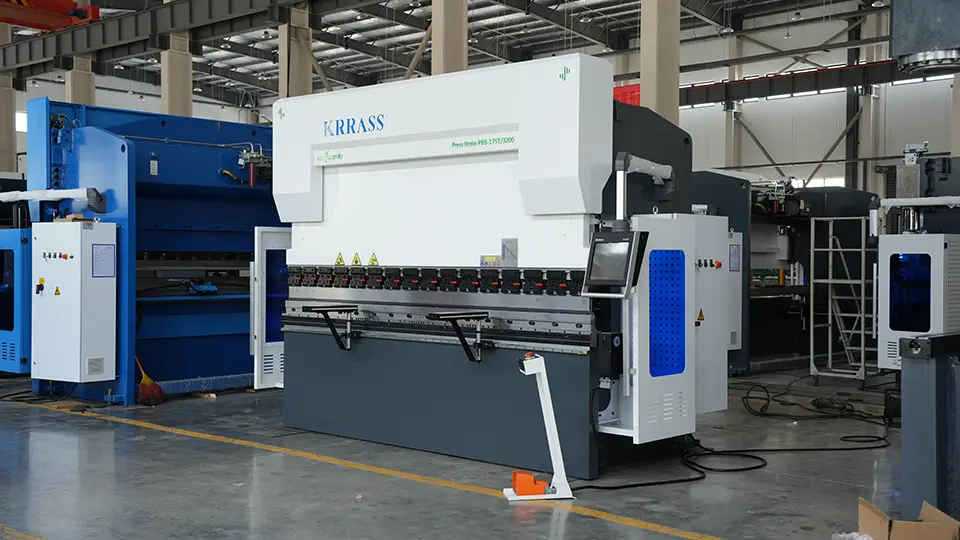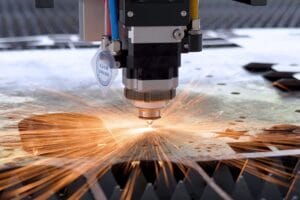In the evolving landscape of metal fabrication, understanding the nuances between Electric Press Brakes and Hydraulic Press Brakes is key to optimizing production. This comprehensive guide delves into the intricacies of both types, helping you navigate through the complex choices to find the perfect solution for your manufacturing needs.
- What is Press Brake
- How Press Brake Work
- Importance of Choosing the Right Type of Press Brake
- Electric Press Brakes
- Hydraulic Press Brakes
- Comparative Analysis
- Industry Applications
- Factors to Consider When Choosing a Press Brake
1.What is Press Brake?
When it comes to shaping metal sheets into custom forms, press brakes are indispensable tools in the manufacturing industry. A press brake is a machine used for bending sheet and plate material, most commonly sheet metal. It forms predetermined bends by clamping the workpiece between a matching punch and die.
Broadly, press brakes are categorized into two types: Electric Press Brakes and Hydraulic Press Brakes. Each type has its unique mechanics and advantages, tailored to different production needs. The choice between an electric and a hydraulic press brake often hinges on factors like production volume, precision requirements, energy efficiency, and the specific metal materials being worked on.
The heart of a press brake is its force or tonnage, which determines the machine's capability to bend thick or hard materials. The versatility of press brakes allows them to be used in a variety of industries, from automotive and aerospace to construction and specialized metal fabrication. Understanding the basics of a press brake and its types is crucial for manufacturers and businesses in selecting the right equipment that aligns with their production goals and operational efficiency.
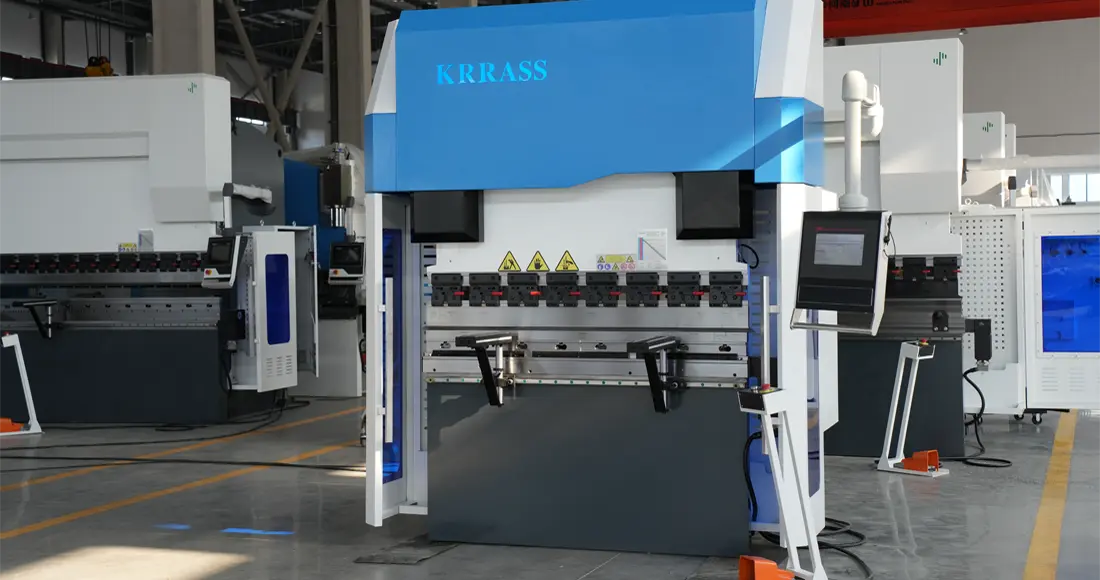
2.How Press Brakes Work
The operation of a press brake involves a combination of mechanical force and precision control. At its core, the process is relatively straightforward. The material to be bent is placed on a die set. The die set includes a lower component with a v-shaped groove (the die) and an upper component (the punch) that presses down on the sheet metal.
When the machine is activated, the punch descends and forces the metal sheet into the die, creating the bend. The depth to which the punch descends determines the angle of the bend. This is where the distinction between Electric Press Brakes and Hydraulic Press Brakes becomes significant. Electric press brakes utilize servo-electric motors to control the movement of the punch, allowing for high precision and repeatability. In contrast, hydraulic press brakes use hydraulic fluid and cylinders to create the bending force.
The efficiency, accuracy, and quality of the bending process depend largely on the type of press brake used, as well as the expertise of the operator. Modern press brakes come equipped with advanced features like CNC (Computer Numerical Control) systems, which further enhance precision and control, allowing for complex bending operations with minimal manual intervention. Understanding the mechanics of how press brakes operate is crucial for manufacturers to optimize their production processes and achieve the desired quality in metal fabrication.
3.Importance of Choosing the Right Type of Press Brake
The decision to select either an Electric Press Brake or a Hydraulic Press Brake can significantly impact production efficiency, quality of output, and operational costs. Each type of press brake has its unique strengths and is suited to specific kinds of tasks and environments.
Electric press brakes are known for their precision, energy efficiency, and lower maintenance costs. They are ideal for applications requiring high accuracy and repeatability, particularly in smaller-scale productions or specialized fabrications. Their fast processing speeds and quiet operation make them suitable for workplaces where noise reduction is a priority.
On the other hand, hydraulic press brakes are favored for their versatility and robustness. They are capable of handling larger, thicker materials and are better suited for heavy-duty operations. Their ability to exert greater force makes them a go-to choice for large-scale industrial manufacturing. However, this comes with the trade-off of higher energy consumption and maintenance requirements.
Making the right choice depends on evaluating factors such as production volume, material types, desired precision, energy efficiency, and budget constraints. A well-chosen press brake not only ensures optimal performance but also contributes to long-term cost savings and improved product quality. Therefore, understanding the specific needs of your manufacturing process is essential in selecting the most appropriate press brake.
4.Electric Press Brakes
4.1 Introduction to Electric Press Brakes
Electric Press Brakes represent a significant technological advancement in the realm of metal fabrication. These machines employ state-of-the-art servo-electric motors, distinguishing them from their hydraulic counterparts. The primary appeal of electric press brakes lies in their precision, energy efficiency, and reduced environmental impact.
4.2 How Electric Press Brakes Work
The working mechanism of electric press brakes involves the use of servo motors to drive the ram. This setup allows for extremely precise control over the bending process. The servo-electric system translates to a smoother, more consistent operation, making these machines ideal for intricate and detailed work where precision is paramount.
4.3 Advantages of Electric Press Brakes
Energy Efficiency: One of the standout features of electric press brakes is their energy efficiency. Unlike hydraulic machines that constantly run pumps and motors, electric press brakes consume power only during the actual bending process. This efficiency can lead to significant energy savings over time.
Precision and Control: The precision control offered by electric press brakes is unparalleled. The ability to make micro-adjustments ensures a high degree of accuracy, essential in achieving consistent bending results, especially for delicate or intricate designs.
Speed and Productivity: Electric press brakes often operate at higher speeds compared to hydraulic presses. This increase in speed translates to higher productivity, allowing manufacturers to complete more jobs in less time.
4.4 Disadvantages of Electric Press Brakes
Initial Cost: The sophisticated technology of electric press brakes often comes with a higher initial investment compared to hydraulic models. This factor can be a significant consideration, especially for small-scale operations or businesses with limited budgets.
Limitations in Force and Size: While electric press brakes excel in precision, they may not match the force exerted by hydraulic presses. This limitation can be a drawback when working with very thick or hard materials, or for applications requiring extensive force.
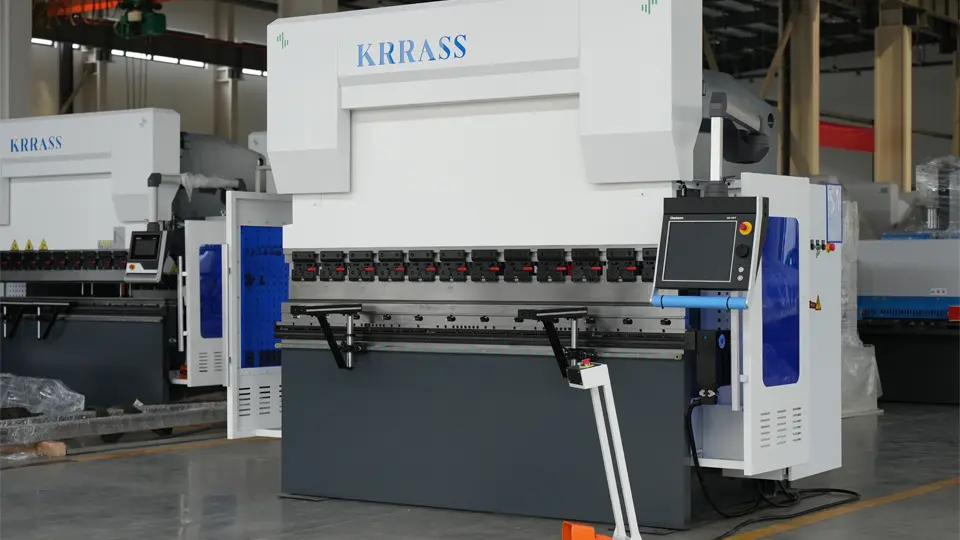
5.Hydraulic Press Brakes
5.1 Introduction to Hydraulic Press Brakes
Hydraulic Press Brakes have been a staple in metal fabrication for decades, known for their robustness and versatility. Utilizing hydraulic power, these machines are capable of exerting significant force, making them suitable for a wide range of bending tasks, especially those involving thick or hard materials.
5.2 How Hydraulic Press Brakes Work
In a hydraulic press brake, the bending force is generated by hydraulic fluid. The fluid is pressurized in cylinders, which then drives the ram. This mechanism allows for the exertion of substantial force, making these machines ideal for heavy-duty bending operations. The pressure and speed can be adjusted to suit various material types and thicknesses.
5.3 Advantages of Hydraulic Press Brakes
Power and Versatility: Hydraulic press brakes are renowned for their power, capable of handling demanding tasks with ease. Their versatility in working with different materials and sizes is a significant advantage in diverse manufacturing settings.
Durability and Reliability: These machines are built to last. Their durability makes them a reliable choice for high-volume, industrial-scale operations where downtime can be costly.
5.4 Disadvantages of Hydraulic Press Brakes
Energy Consumption: Hydraulic press brakes tend to consume more energy compared to electric models. This is due to the continuous operation of hydraulic pumps, even when the machine is not actively bending.
Maintenance Requirements: The complexity of hydraulic systems means these machines require regular maintenance to ensure optimal performance and prevent downtime. This can involve additional costs and resources over the machine’s lifespan.
6.Comparative Analysis
6.1 Performance Comparison
Force and Capacity: Hydraulic press brakes generally offer greater force and capacity, making them suitable for heavy-duty operations. Electric press brakes, while less powerful in terms of force, excel in tasks requiring precision and intricate detailing.
Accuracy and Consistency: Electric press brakes have an edge in accuracy and consistency, particularly beneficial for high-precision work and repeatable production runs. Hydraulic press brakes, while reliable, may not match the exactness offered by electric models.
6.2 Cost Analysis
Initial Investment: Typically, electric press brakes come with a higher initial cost due to their advanced technology. Hydraulic press brakes, being more traditional, often have a lower upfront cost.
Long-Term Operational Costs: When considering long-term operational costs, electric press brakes may be more cost-effective due to their energy efficiency and lower maintenance requirements. Hydraulic press brakes, although cheaper initially, could incur higher ongoing expenses in energy consumption and maintenance.
6.3 Environmental Impact
Energy Consumption: Electric press brakes are more energy-efficient compared to hydraulic ones, which is a significant factor in today’s energy-conscious environment.
Sustainability Factors: Beyond energy consumption, electric press brakes are often viewed as more environmentally friendly due to their lower carbon footprint and reduced noise pollution. This aspect is increasingly important for businesses aiming to adopt sustainable practices.
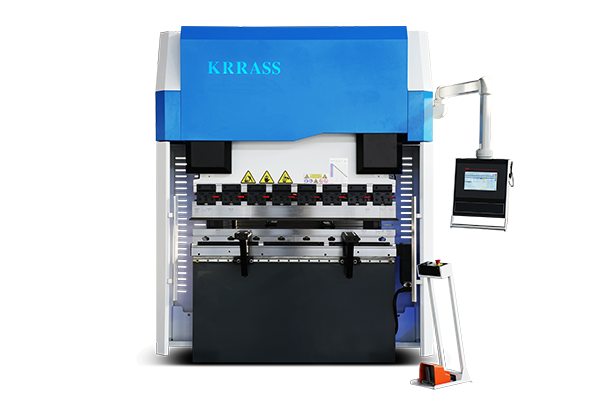
7.Industry Applications
7.1 Where Electric Press Brakes Excel
Electric Press Brakes are particularly advantageous in industries where precision and intricate detailing are paramount. These include aerospace, where exact tolerances are critical, and the electronics sector, which often requires delicate and consistent bending for small components. Their rapid operation and precision also make them ideal for the automotive industry, especially in creating custom, high-quality parts.
7.2 Where Hydraulic Press Brakes are Preferred
Hydraulic Press Brakes, with their robust power and versatility, are preferred in heavy industries like shipbuilding and large-scale construction. They are also a staple in the commercial metal fabrication sector, where they handle a wide range of materials and thicknesses. These machines are ideal for applications requiring substantial force, such as bending thick steel plates for heavy machinery or infrastructure projects.
8.Factors to Consider When Choosing a Press Brake
Selecting the right press brake for your business involves a careful consideration of various factors. It's not just about the machine's capabilities, but also how it aligns with your specific business needs and operational environment.
Business Needs and Goals
Understanding your business objectives is crucial. Are you aiming for high-volume production, or do you specialize in custom, precision-oriented jobs? An electric press brake might be more suited for the latter, while a hydraulic press brake could be better for heavier, high-volume tasks.
Material Types and Thicknesses
The types of materials you work with and their thicknesses are vital considerations. Electric press brakes are excellent for thinner, more delicate materials where precision is key. If your work involves thicker, tougher materials, a hydraulic press brake's power and versatility would be more beneficial.
Workshop Space and Constraints
The physical space of your workshop and any constraints also play a role in your decision. Electric press brakes typically have a smaller footprint and are quieter, making them suitable for smaller or noise-sensitive environments. Hydraulic press brakes, being larger and noisier, might require more space and are better suited for industrial settings.
Choosing the Best Press Brake
Making the right choice in press brakes can be a game-changer for your business. If you're looking for industry-leading expertise and solutions, look no further than Krrass, China's premier Press Brake manufacturer and solution provider. With Krrass, you gain access to a world of precision, efficiency, and innovation in metal fabrication. Discover how Krrass can elevate your production capabilities today.
Read More:
How to Calculate the Bending Allowance of Press Brake
Exploring the World of CNC and CNC Press Brakes
How to Choose the Right Press Brake Tool for Your Press Brake
